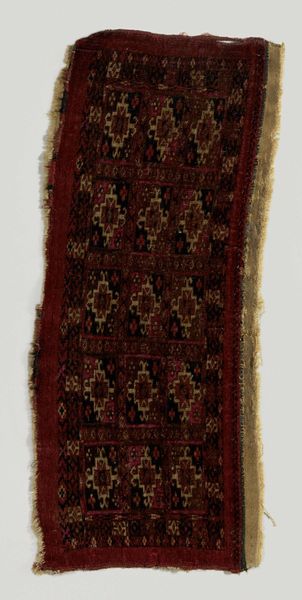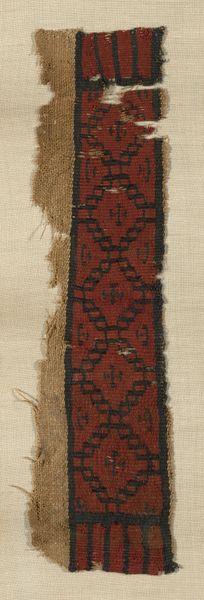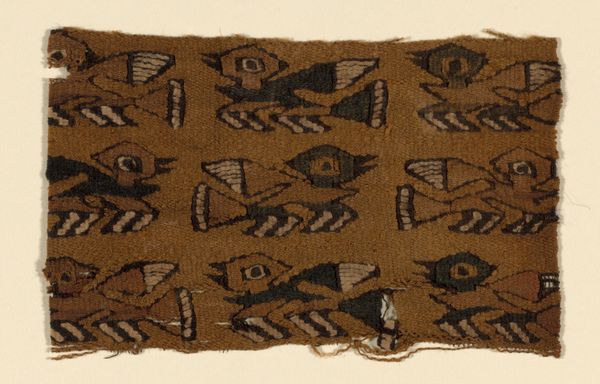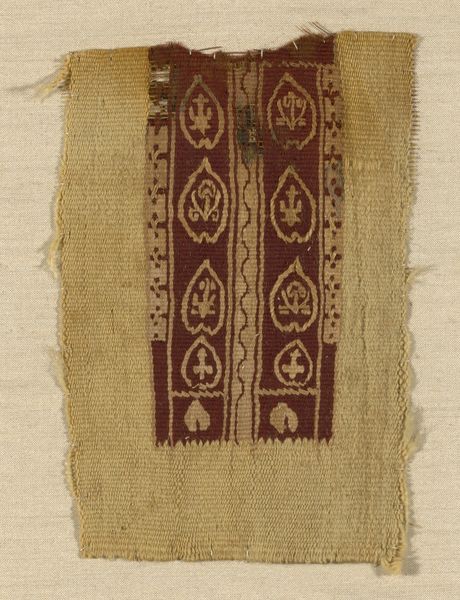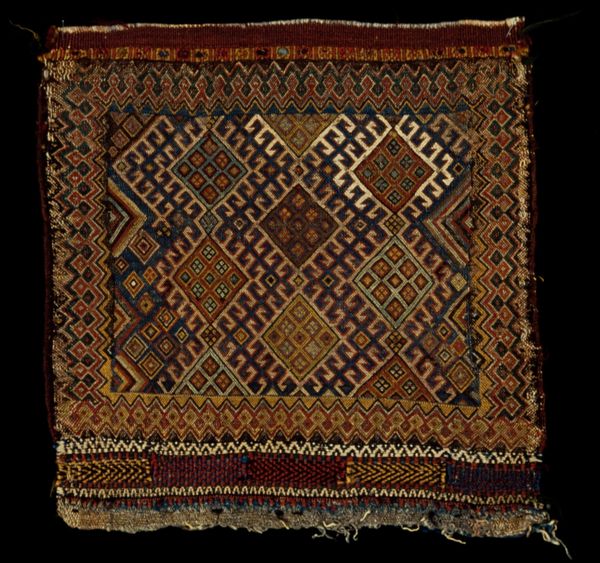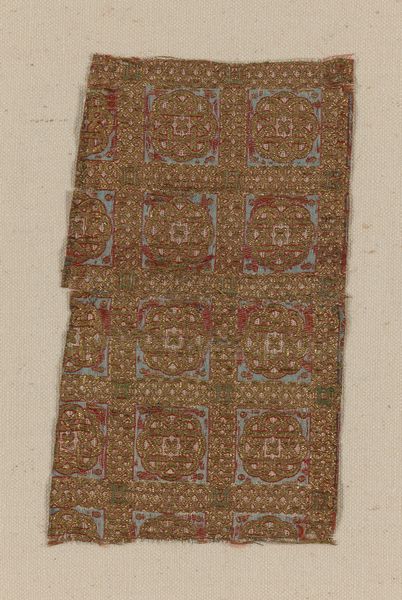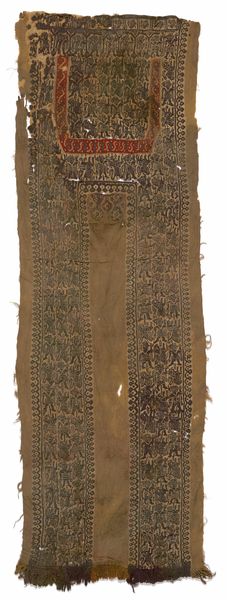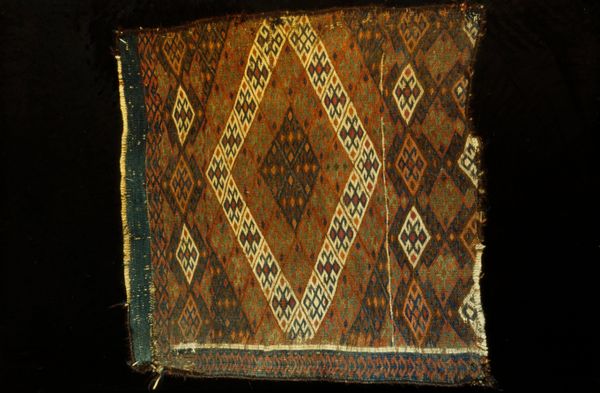
fibre-art, weaving, textile
#
fibre-art
#
textured
#
weaving
#
textile
#
geometric
#
natural texture
#
indigenous-americas
Copyright: Public Domain
Editor: This is "Fragment", a woven textile from Chuquibamba, possibly dating back to 1476-1532. The patterns and textures create a really interesting surface. What strikes you first about its composition? Curator: The piece immediately arrests attention through its palpable materiality. The varied threads, the deviations in plane and the almost crude implementation, underscore a rich construction, but also a potent symbolism through pattern and motif. It’s compelling that despite its designation as a 'fragment', it possesses structural integrity, complete in its textual and aesthetic properties. How do the visible damages affect the interpretation of the artwork? Editor: That’s an interesting point; I hadn’t considered the damages as being integral. Does it reveal anything about the Indigenous Americas movement it's tied to? Curator: Indeed. Indigenous aesthetics frequently involve imbuing what we term "damage" or "decay" with layered meaning, signaling change and impermanence. Do you think it possible that, in this “Fragment," the intentional inclusion and treatment of its fiber may serve a vital function within the community which bore it? Note also that it could have symbolic ties within the society, by means of certain production approaches. Editor: It definitely adds another layer of meaning. I see that its artistic intention and construction are deeply intertwined. Thanks for expanding my understanding! Curator: The piece really makes us ponder upon art-historical convention.
Comments
No comments
Be the first to comment and join the conversation on the ultimate creative platform.

